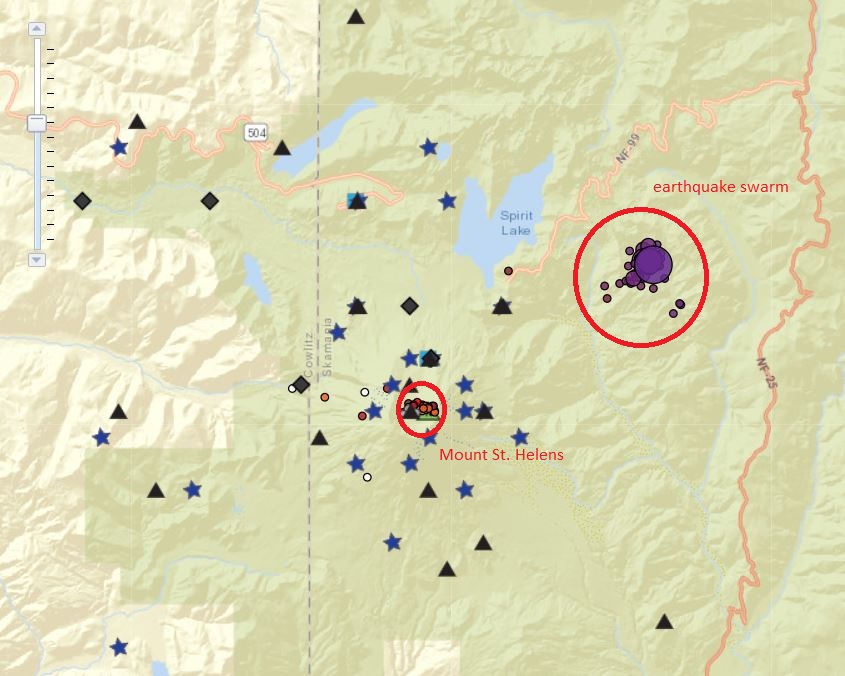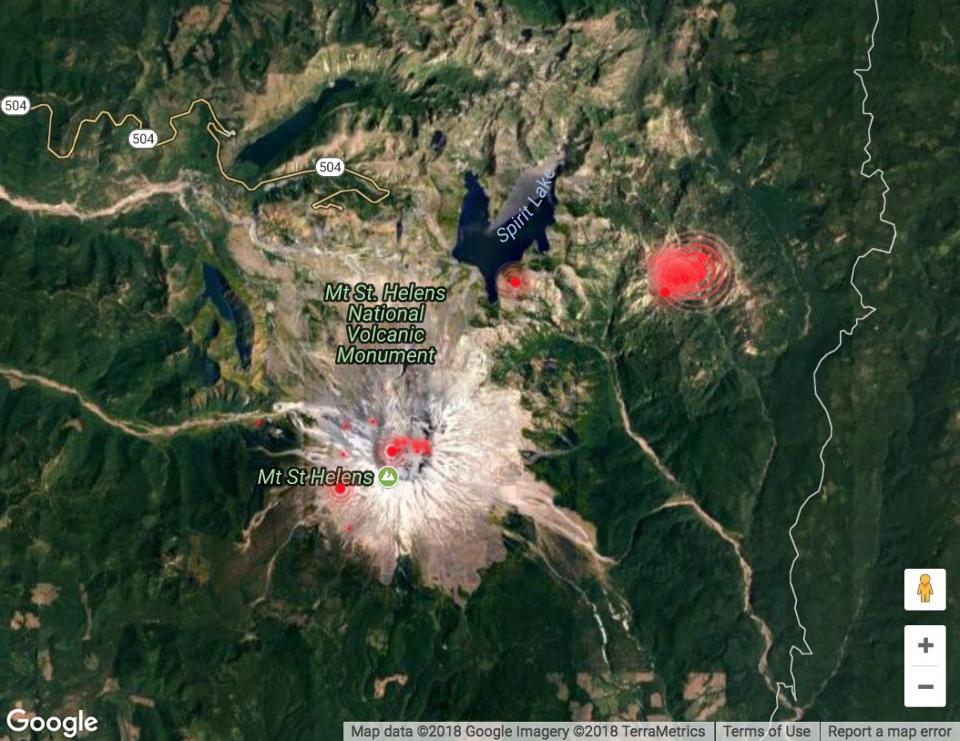Mount St. Helens is rumbling again, experiencing more than 70 earthquakes since New Years Day and aftershocks continuing every few hours. The seismic swarm largest quake – a M3.9 tremor – struck 5 miles from the active stratovolcano located in Skamania County, Washington, in the Pacific Northwest region of the United States.

The strongest M3.9 tremblor was felt in Portland but there were no reported injuries or damage. Since that earthquake, there have been 60 more earthquakes, averaging about every half hour with magnitudes from 0.6 to 2.6.
The USGS reports that the M3.9 earthquake to the northeast of Mount St. Helens is aligned with regional stress as opposed to the localized Mount St. Helen’s stress axis, thus, they do believe this earthquake is related to the nearby volcano.
It is common to experience swarms of earthquakes at Mount St. Helens. The recent earthquakes appear to be both from regional stress (i.e. not related to the volcano) and from the volcano itself.

Mount St. Helens is most commonly known for its major eruption in 1980, the deadliest and most economically damaging volcanic event in the history of the United States. The stratovolcano is situated just 96 miles from Seattle and 50 miles from Portland, making an eruption especially dangerous.
While Mount St. Helens hasn’t had a large eruption for the past almost 38 years (there have been smaller eruptions as recently as 10 years ago) it is still considered an active stratovolcano by geologists. In fact, Mount St. Helens is considered a relatively young volcano, forming in the past 40,000 years and has been the most active volcano in the Cascade Range within the past 10,000 years.
This mountain range, along with Mount St. Helens, will continue to experience active volcanism and deadly eruptions as long as the Juan de Fuca Plate is subducting underneath the North American Plate. The dense, relatively thin, and low lying Juan de Fuca Plate is being pushed against and under the thicker and less dense North American Plate. This is due to the continuous spreading and opening of the Pacific Ocean, which has resulted in the Pacific Ring of Fire.
While the recent earthquakes may make residents nearby Mount St. Helens uneasy, there is no immediate danger of an eruption. However, this is another sign of why we need constant volcano and earthquake monitoring.
While we can’t be certain, chances are the next time Mount St. Helen erupts, we will be significantly better prepared. So preapre your earthquake plan and stick to it!












[…] Mount St. Helens is rumbling again, experiencing more than 70 earthquakes since New Years Day and aftershocks continuing every few hours. The seismic swarm largest quake – a M3.9 tremor – struck 5 miles from the active stratovolcano located in Skamania County, Washington, in the Pacific Northwest region of the United States. Read More… […]